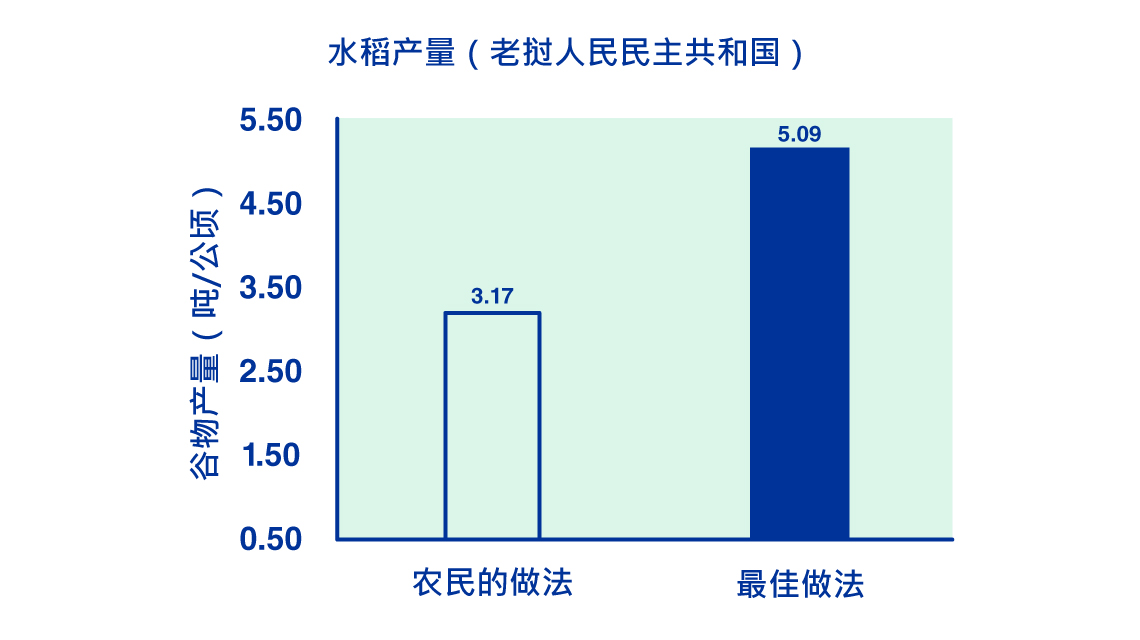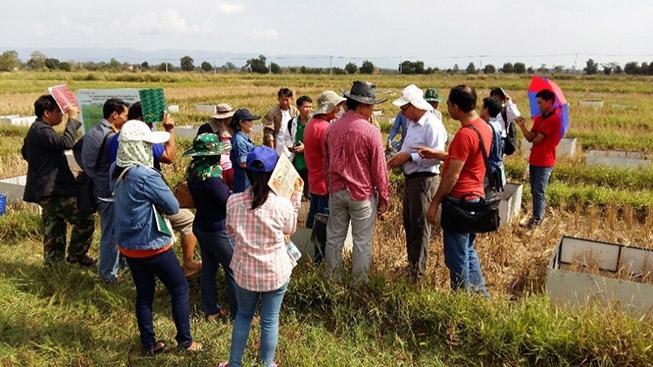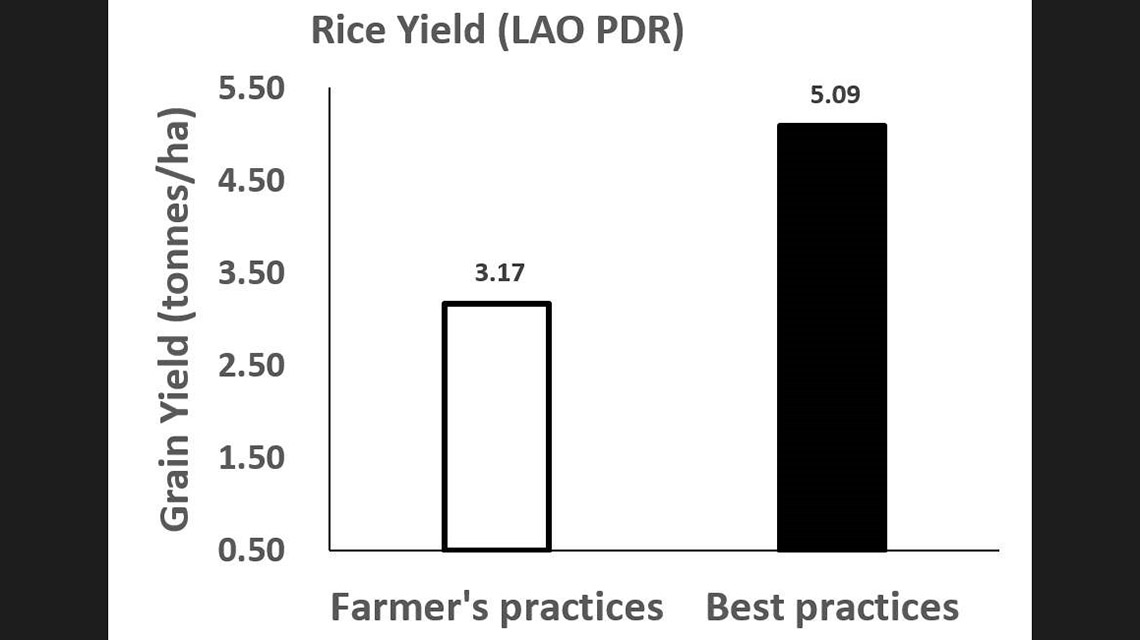The IAEA, through its technical cooperation programme, has trained researchers in using nitrogen-15 (15N), a stable isotope of nitrogen, to quantify the amount of nitrogen plants take up from fertilizers, and then determined the precise amount of fertilizer that farmers should use at various stages of the crop’s life as well as how best to incorporate locally available rice straw and animal manure as a source of nutrients.
Based on those results and as part of the support, IAEA and FAO experts helped local specialists develop a set of Rice Production Guidelines – or protocol – for farmers and agriculture officers working with them. The guidelines provide best soil and nutrient management practices and are based on results obtained with the use of isotopic techniques.
To reach more farmers and disseminate best practices, the IAEA and the experts from the National Agriculture, Forestry and Rural Development Research Institute (NAFRI) developed an easy-to-use brochure for farmers, using information contained in the Rice Production Guidelines, in the Laotian language. So far, 57 farmers from four villages in Vientiane province have been trained in the pilot phase of the programme.
“This farmer’s brochure is a complete package of technology right from preparing the land for rice sowing until its harvest,” said Mohammad Zaman, a soil scientist in the Joint FAO/IAEA Programme of Nuclear Techniques in Food and Agriculture. “The brochure is a toolbox that shows farmers what to do, from preparing the land to applying fertilizer, weed management, insect management and, lastly, a timely harvest.”



